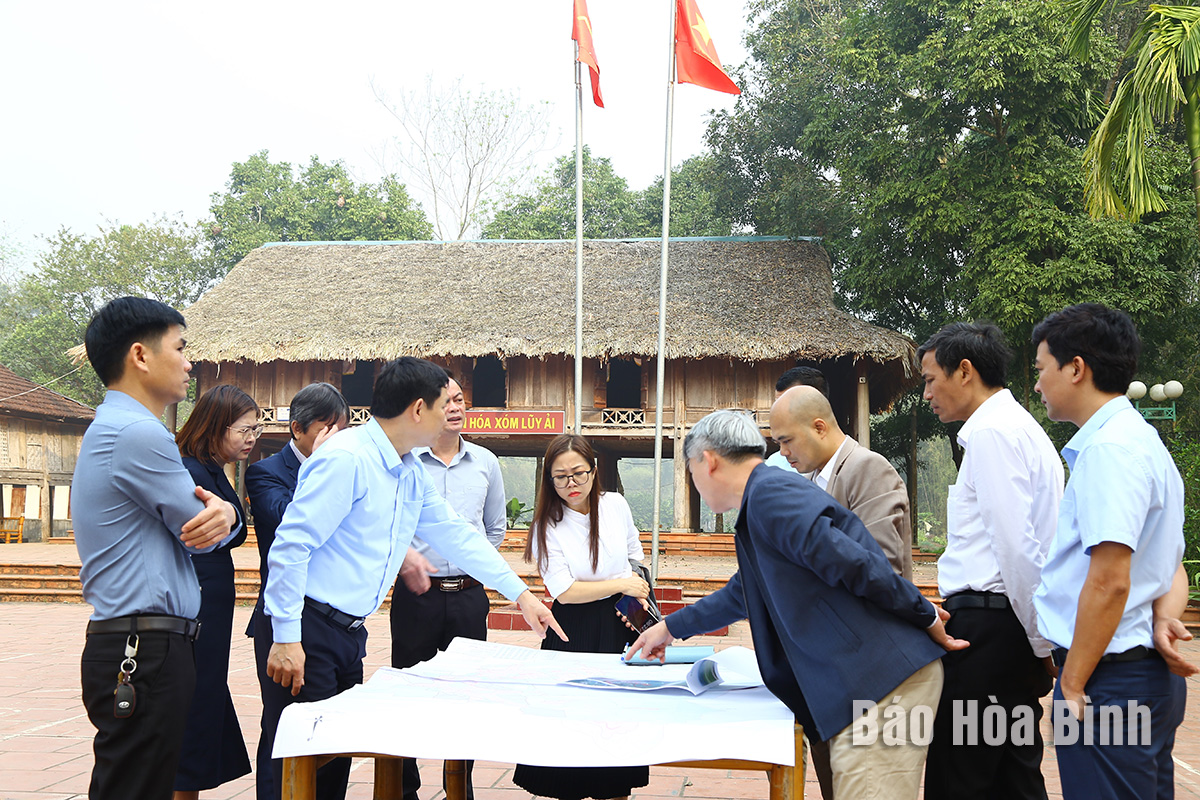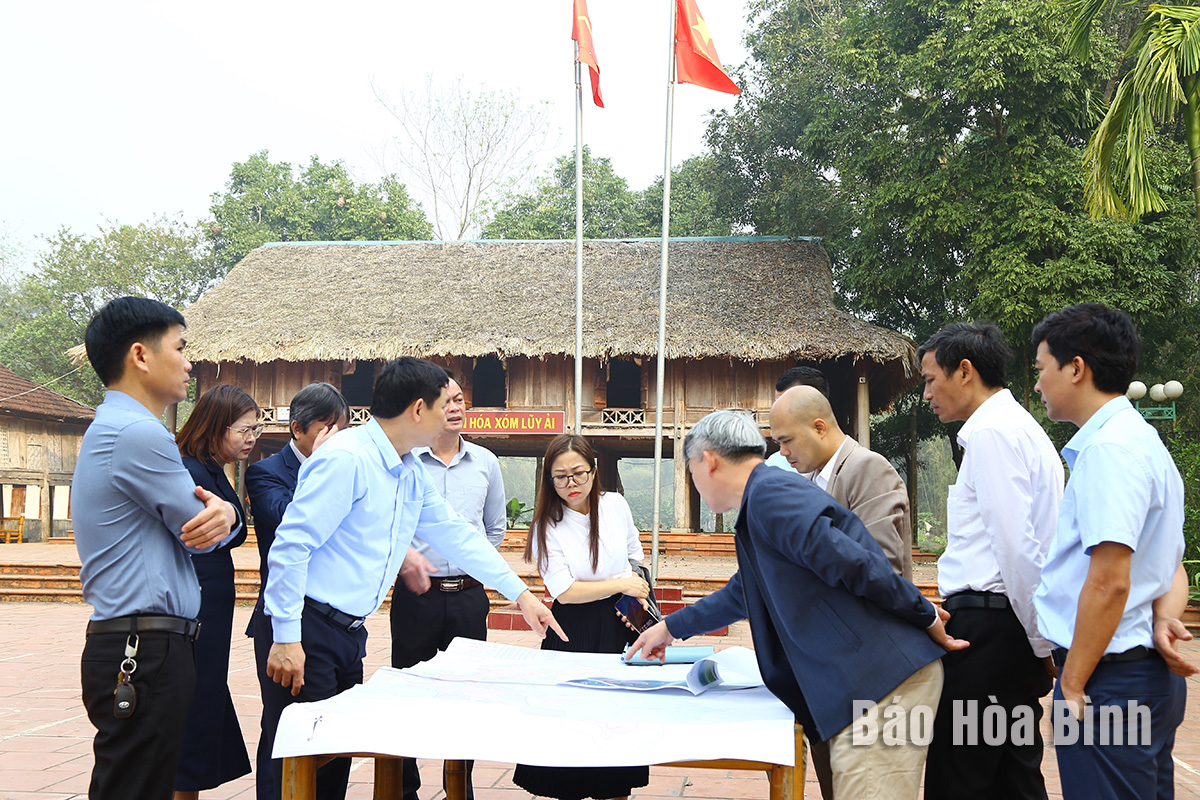



Competent agencies of Hoa Binh province and Tan Lac district give feedback to the planning of Muong ethnic cultural conservation spaces in Phong Phu commune.
Previously, the ancient Muong village in Ai hamlet, Phong Phu commune has 34 households and 165 people, all of them are Muong people. In 2008, Ai hamlet was recognised by the Ministry of Culture, Sports and Tourism as a typical traditional village of minority ethnic groups and a representative of Muong ethnic hamlet. It is also the oldest Muong village in Hoa Binh province which still maintains unique cultural traditions and the beauty of Muong ethnic culture. In 2017, Luy Ai hamlet was merged with Luy hamlet and renamed Luy Ai. Currently, Luy Ai hamlet has 207 households and 936 residents, with 97% of households being Muong people. Former Ai hamlet still retains 19 out of 34 traditional stilt houses, with the rest being stilt houses with concrete floor and single storey houses. Luy Ai hamlet is now a three-star community tourism destination, with two households offering homestay services. Local residents have utilised landscape and culture for developing community-based tourism, along with new-style rural area building.
To preserve the cultural values of Muong Bi ethnic people, the provincial People's Committee assigned Tan Lac district to devise a plan on preservation of Muong ethnic cultural space associated with tourism, aiming to complete the planning dossier for reviewing and approval in the third quarter of this year.
Dinh Anh Tuan, Secretary of the Tan Lac District Party Committee, said the district People’s Committee was asked to conduct a survey on current status, determine boundaries, scale of planning areas, select planning options, and estimate funding sources. The planned Muong ethnic cultural conservation space will cover about 125ha, includes a conservation area, a service area, a high-end hotel and area designated for organising festivals as well as residential zones, landscapes and nature reserve zones.
According to the district People's Committee, the space is essential for preserving and promoting the distinctive cultural values of the Muong people associating with the development of unique tourism products based on cultural identity, environmental landscapes, and branding of Muong tourism, thereby sustainably improving the lives of residents.
During an inspection on planned Muong ethnic cultural conservation space, Nguyen Phi Long, alternate member of the Party Central Committee and Secretary of the provincial Party Committee suggested Tan Lac district closely coordinate with relevant departments and agencies to ensure its quality and long-term vision in line with State regulations. Focus should be placed on preserving the traditional cultural values of the Muong people, the landscape, architecture, customs, way of life, intangible cultural heritage of households living in the former Ai hamlet.
Attention should be paid to planning new items to expand tourism space; studying mechanisms and policies for mobilising investment resources for infrastructure; building and exploiting Muong cultural values for sustainable tourism development and improving residents' livelihoods, he said.